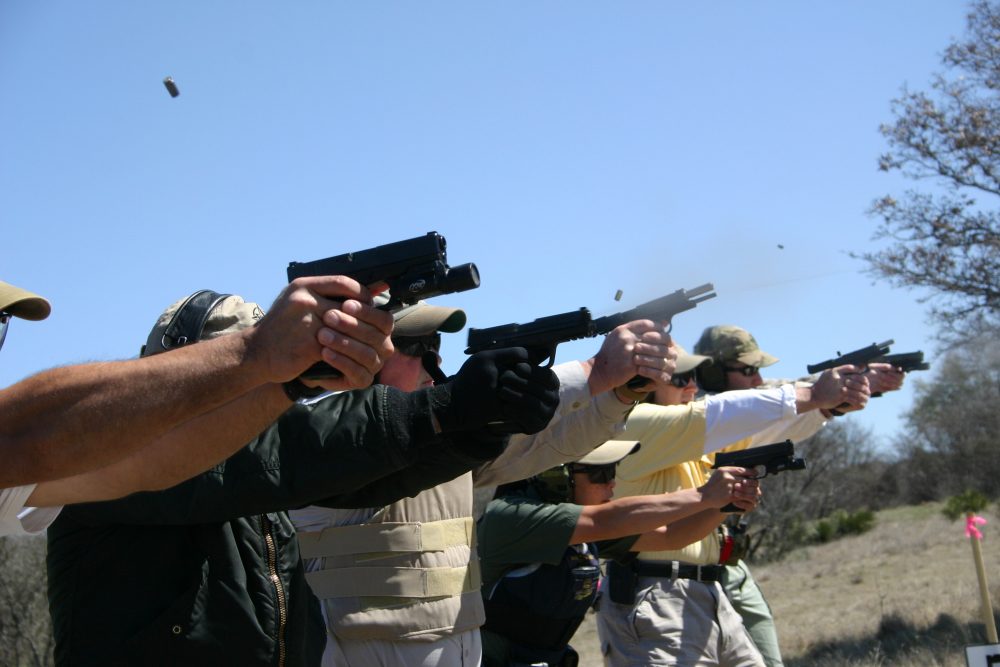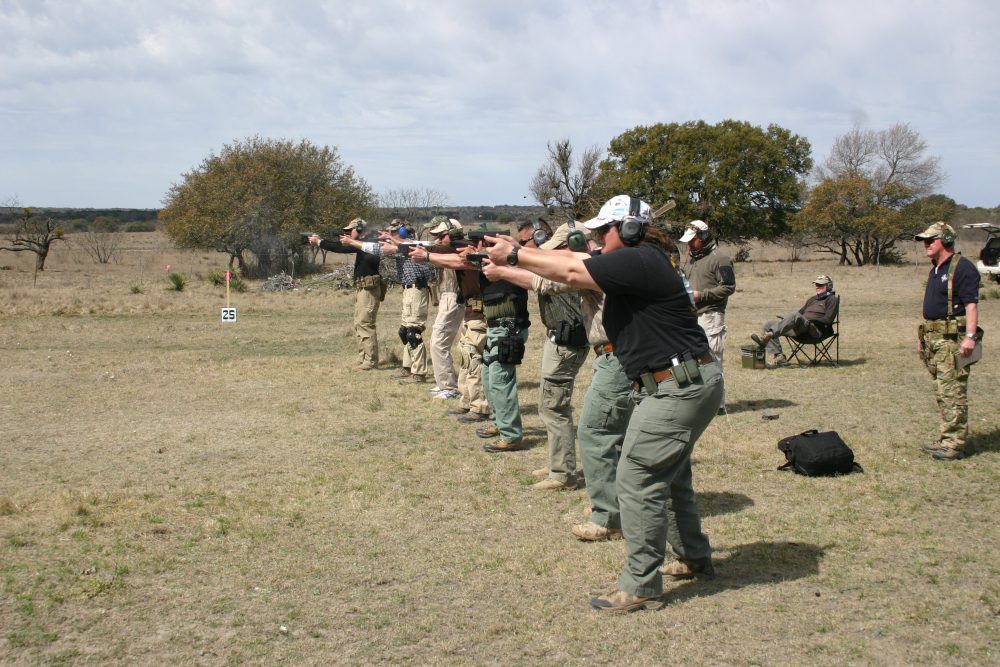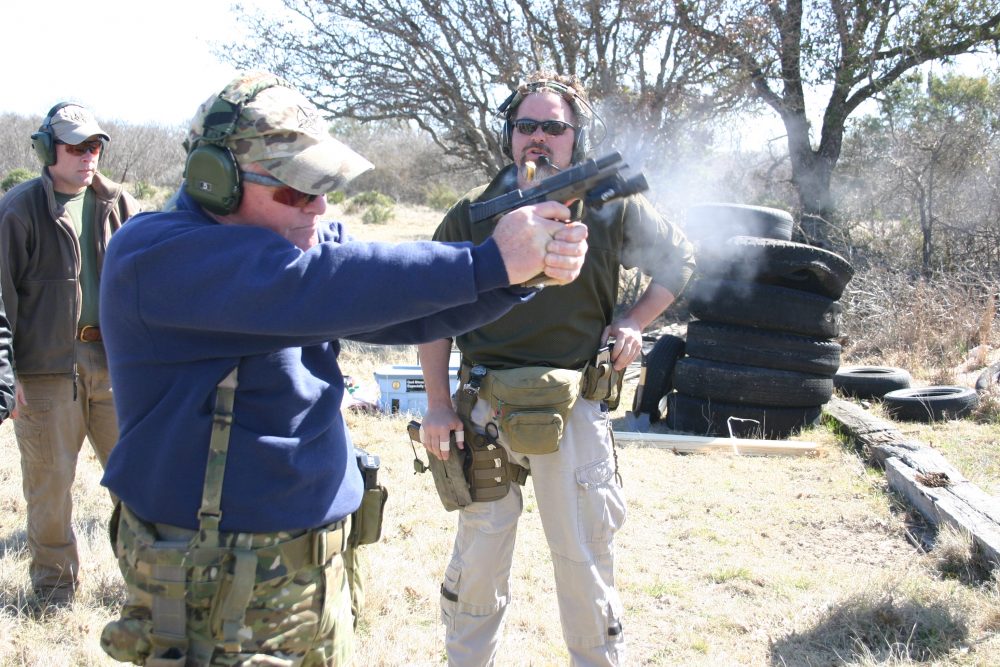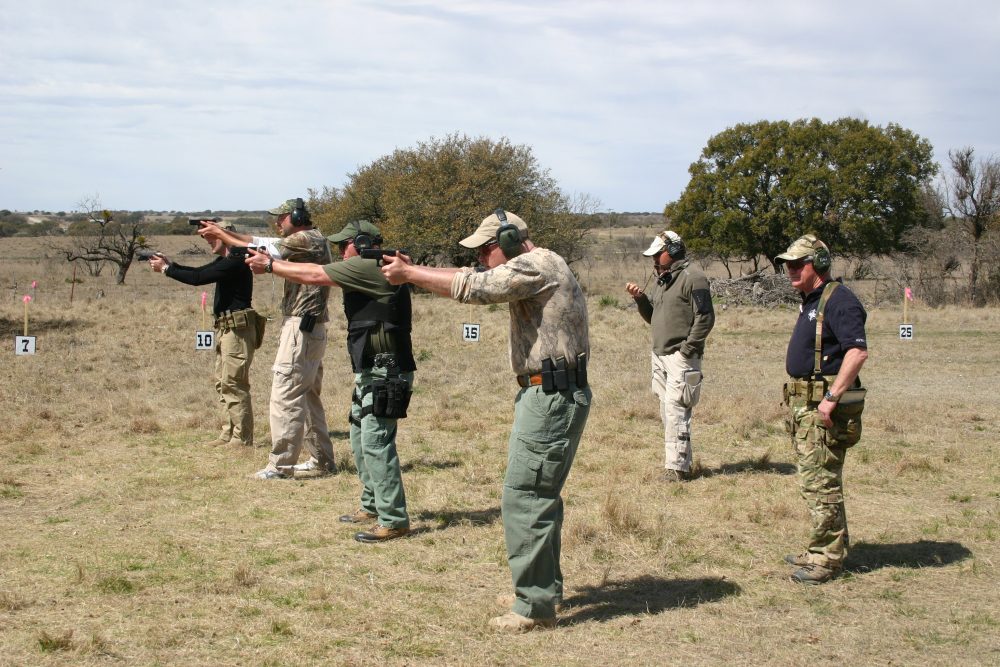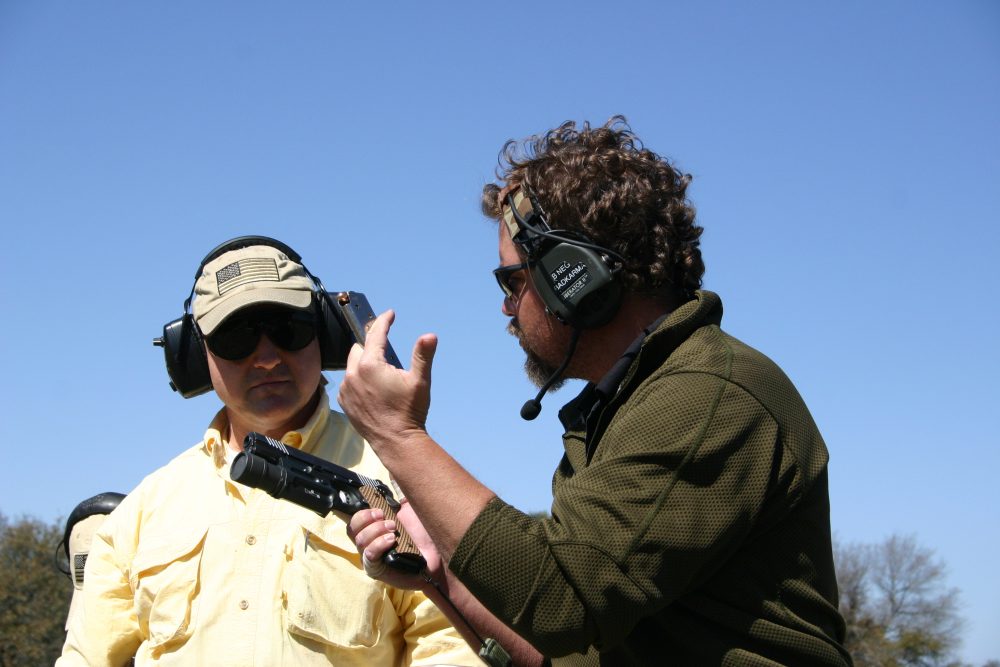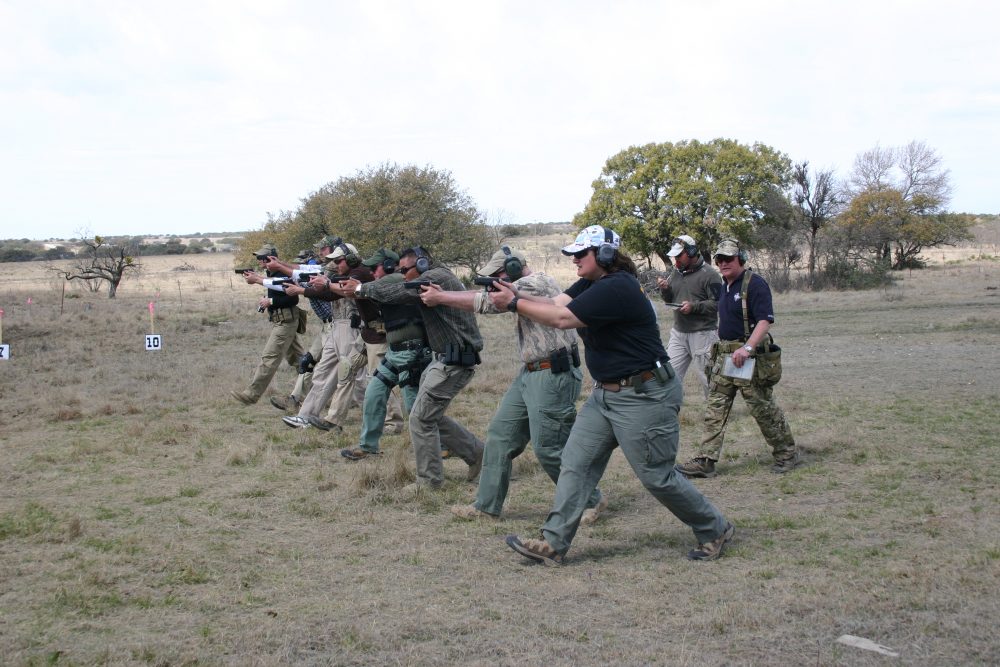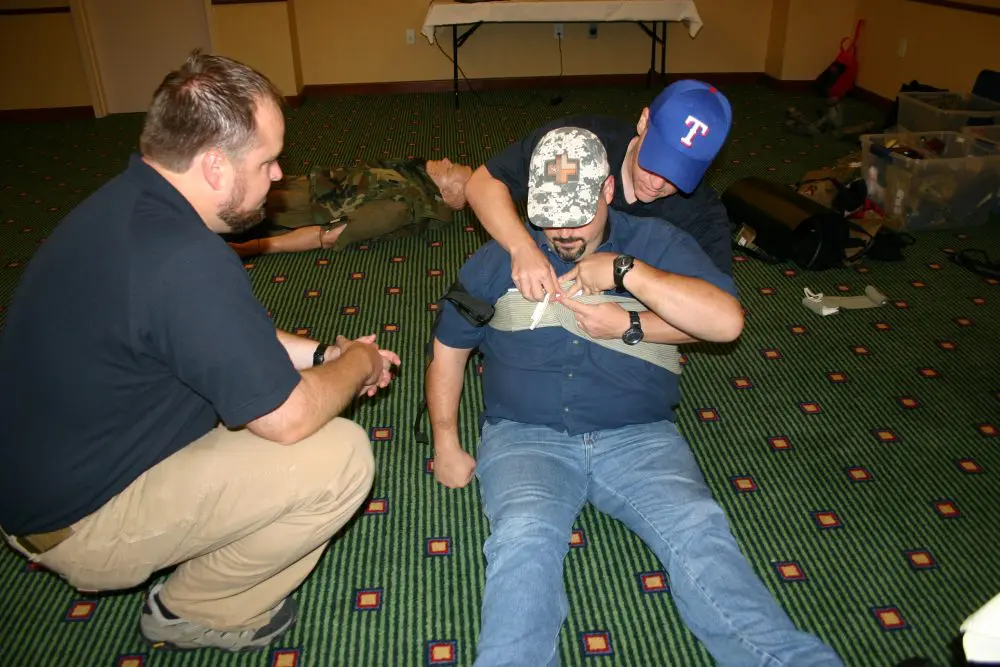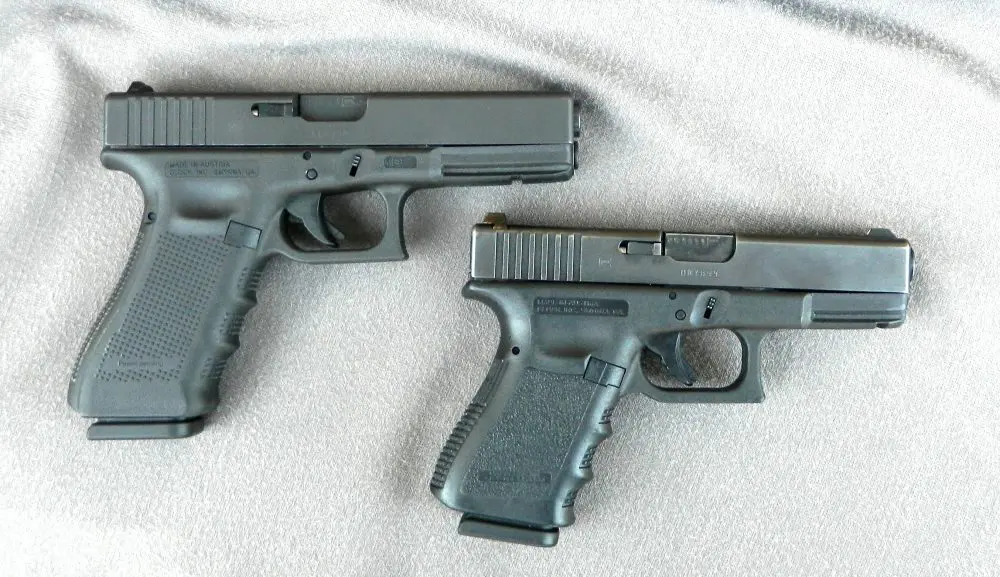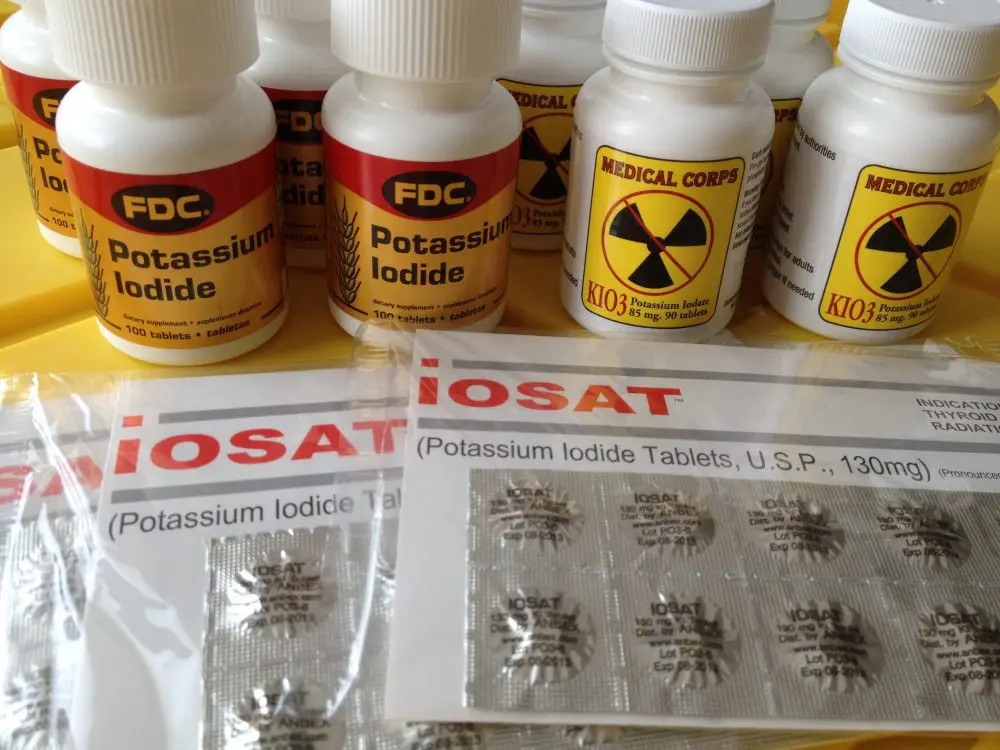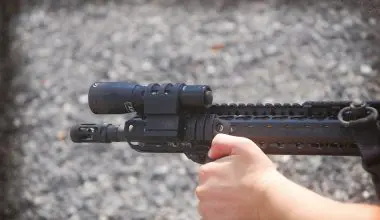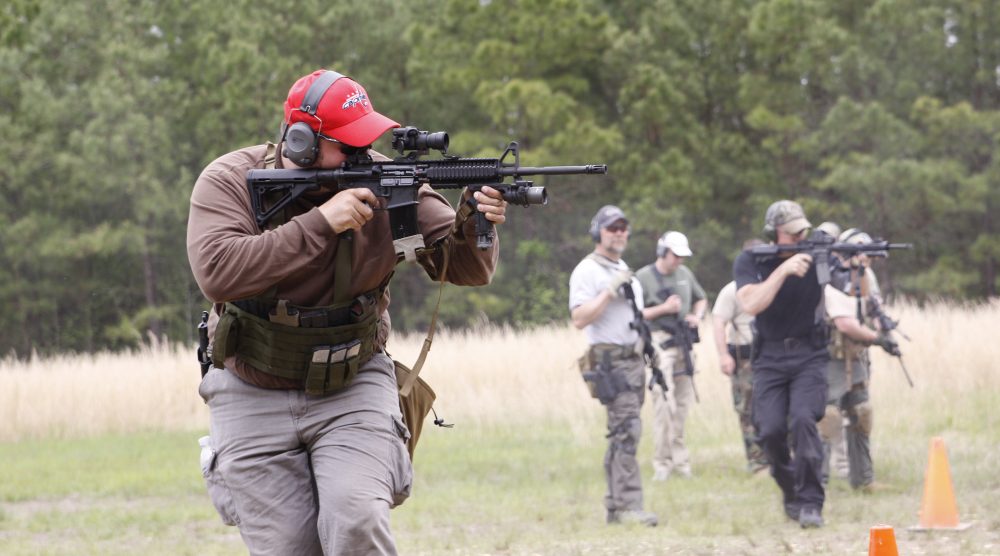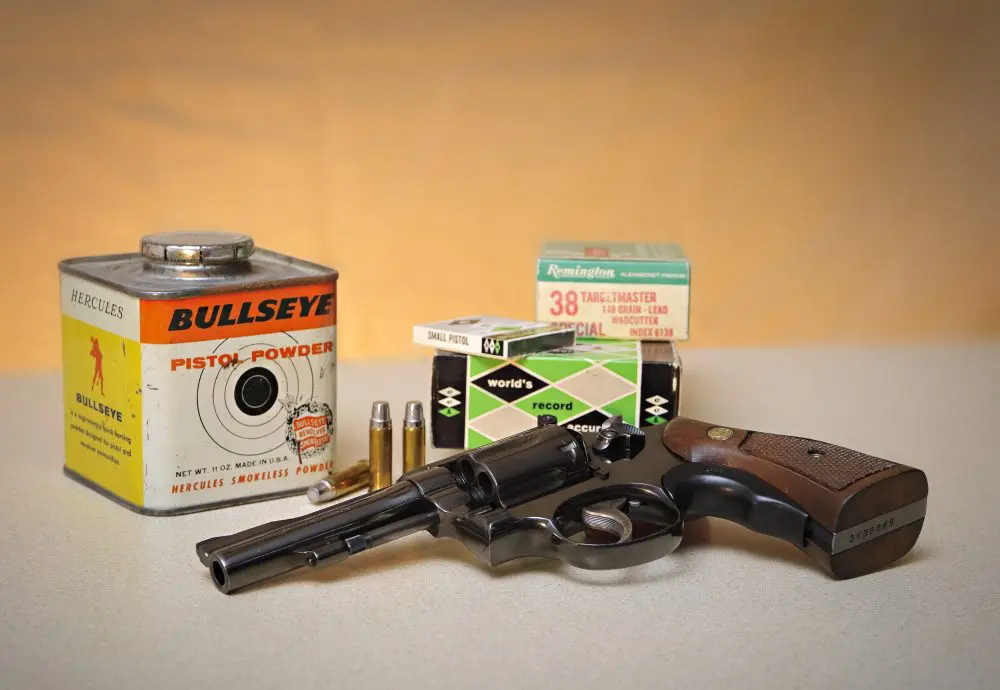“I must be a bad instructor! Here it is 1422 hours on the second day and apparently I haven’t covered how to make ready.”
That’s Pat Rogers channeling Don Rickles to make a point by employing humor and sarcasm. This makes Pat’s corrections entertaining and, more importantly, memorable, particularly for the person who’s the target of the sarcasm.
The “make ready” command and the actions that the student was expected to complete upon hearing it were two of the first things Pat had covered before we stepped up to the firing line on the first morning of his two-day Level Two pistol class.
Lead and brass fly as students fire a drill at EAG Tactical Level Two Handgun class.
Though Pat Rogers is best known in the firearms training world and this magazine for his work with carbines, he has taught the handgun all along. Only relatively recently, however, has he begun offering handgun classes to the general public through his training company, EAG Tactical. He does this both because of the demand and because of some of the poor handgun skills he has witnessed while teaching carbine classes. Pat offers these classes to expose more people to handguns while stressing commonality of manipulations and integration with carbines.
Pat Rogers has over four decades of experience, including combat with the USMC and officer-involved shootings with the NYPD. He mentions his personal experience from both realms when relevant, and uses it to convey the reality of combat and the rationale for the SOP that he teaches.
“Violence occurs at a speed that most people cannot comprehend,” Pat stresses. This is why it is vital to eliminate anything from your response that is not related to addressing it. He often highlights his experience in the context of practical applications of what he teaches, as well as problems that arose when best practices were not employed.
Our class included several peace officers, including husband and wife officers, a pair of bodyguards, a paramedic, a contractor and many students who had trained with Pat before. The presence of repeat students is always a positive reflection on the instructor.
The most commonly used handgun in the class was a Glock, with the rest shooting a mix of Smith & Wesson M&Ps, and a lesser number of 1911s.
Students fire from 25 yards.
One police officer’s S&W M&P40 went down for the count with a trigger problem that rendered it unable to fire. My own M&P9 experienced one failure to feed while shooting on the move and one magazine where the rounds lodged together to lock the follower in place so that even a hard drop would not dislodge them.
This is not the first problem I’ve had with this gun. Previously I had encountered failures to extract every 300 to 400 rounds. A specially designed tool steel extractor from Apex Tactical eliminated this issue, and a custom LX trigger job from Bowie Tactical gave it a trigger pull that brought it very close to a good 1911. Thankfully, the Black Hills ammo I was running worked without a hitch, but we did see a few ammo problems with cheaper offshore brands.
Shooting was conducted against an EAG Tactical silhouette, which employs a camouflage pattern with deliberately ill-defined primary target areas. It features an eight-inch diameter kill-zone in the upper chest and an upside-down funnel-shaped zone in the head to represent the brain and upper spinal cord. Pat is careful to differentiate the brain from the head, since it is the brain shot that shuts off activity.
Rogers’ pistol is caught in full recoil with ejecting case as he demonstrates a drill.
Since this was his intermediate handgun class, students were expected to be proficient with basic handgun manipulations.
The class was stance neutral. Pat recognizes that for this level class, most students, through training or experience, have developed their own preference for Isosceles, Weaver or some variation of either. Pat believes that both stances can be valuable, depending upon the situation. He feels that the Weaver is useful when you need to be more compressed. Pat did cover the importance of the hips and shoulders being squared to the target, with the strong side slightly back.
The class began with a safety briefing. In Pat’s 20 years with the NYPD, he witnessed 23 gunshot wounds to the groin, 20 of which were self-inflicted—mainly due to shoving the handgun into the waistband for holsterless carry.
Pat pointed out that a handgun is limited in terminal effect compared to typical antipersonnel long arms, and stressed that we should not count on any firearm taking an attacker out with a single or even multiple shots. There are no magic bullets.
Rogers watches firing line as Mike Hueser runs stopwatch during a drill.
To illustrate this point, he relayed several examples of shootings he had witnessed during his police career, including a knife-armed EDP who was shot in the chest with a load of 00 buckshot and five rounds of .38 Special—and reacted by growling and posing with the knife.
This is why, whether he is teaching use of the handgun or the carbine, Pat places strong emphasis on follow-through and being prepared to shoot again. The antithesis of this is speed holstering, which is one of Pat’s pet peeves. “Don’t be in a hurry to take yourself out of the fight,” he reminded us. And just because someone is down does not mean they are out of the fight, he warned. They may have ducked, tripped or still be capable of posing a deadly threat.
Pat also presented many examples of people he knows personally who were seriously injured but continued to fight and ultimately prevailed. In any one of these cases, the people could easily have concluded that they were doomed and given up. He details these incidents to help develop combat mindset in his students as well as to expose them to the amount of violence and injuries that are incurred in armed encounters.
Mike Hueser demonstrates how to hold a magazine for tactical reload.
Situational awareness is an important aspect of Pat’s classes. He makes sure that students follow through and assess their targets, and don’t reholster their sidearm without executing a tactical reload. This becomes especially important when the sidearm is used as a secondary weapon to a long arm, because if it is holstered without having a partially depleted magazine replaced with a full one, the task will likely be forgotten.
The importance of tac-loading your handgun before holstering to insure that your weapon is fully loaded was driven home by an incident that Pat relayed about two NYPD officers back in the revolver days. The officers had been involved in a shooting and were being sent to the hospital to be checked out, per NYPD SOP.
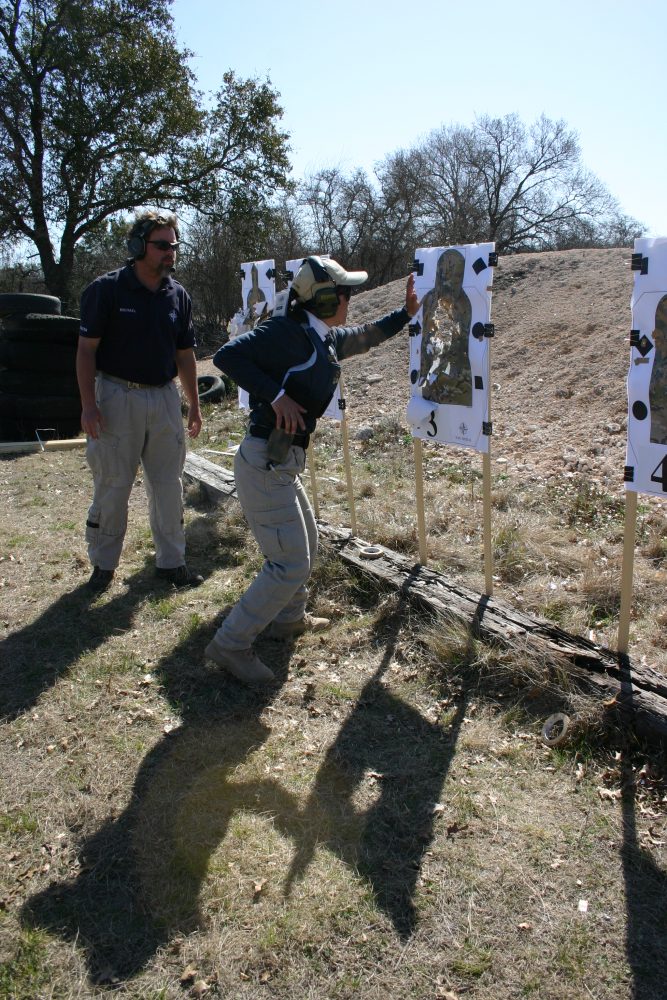
On the way to the hospital, they were stopped at a traffic light and witnessed a holdup at a corner service station. Both officers exited the vehicle and ordered the robber to drop his gun. The robber responded by opening fire. When the officers attempted to return fire, both clicked empty. Accounts like this make points much easier to remember.
Many of the points discussed would be touched on again as the class progressed over the next two days. Pat’s approach to training is to break things down to their individual components, placing heavy emphasis on correct repetitions, and then string them together into more complex tasks once the students have mastered each step.
We began the hands-on portion of the course with a brief review of drawing and reholstering the gun. “Getting the gun out of the holster is not a speed thing as much as an efficiency thing,” Pat explained.
From there we progressed to firing the gun. Pat pointed out that many accuracy problems stem from improperly manipulating the trigger.
We began engaging targets with single shots and quickly progressed to multiple shots. Pat went over several types of engagement sequences, the first being the hammer. This involves two rapid shots with a single sight picture, relying on your steady hold to keep the gun on target as opposed to waiting to acquire a second sight picture before firing a second shot. The hammer is typically used at ranges of seven yards and in with the handgun. Beyond this distance, two shots should be fired as a controlled pair, that is, with a separate sight picture for each shot.
More than two shots may be required. We followed a shooting sequence that simulates this and is known as a “failure drill.” It involves two rounds to the body. If these do not incapacitate the attacker, shoot for the brain, situation permitting. For situations where the brain shot is not available and two shots are not enough, Rogers taught the NSR (non-standard response), consisting of multiple shots to the body.
After lunch on the first day, we covered speed reloads and then moved on to strong- and weak-hand shooting, and finally to multiple assailants.
Pat advocates first engaging the attacker who is the greatest threat. Who this might be depends on the specifics of the situation. An unarmed attacker right on top of you who could grab your weapon potentially poses a more immediate threat than a more distant aggressor armed with a handgun, since the close attacker, if not dealt with, could prevent you from engaging the distant armed assailant.
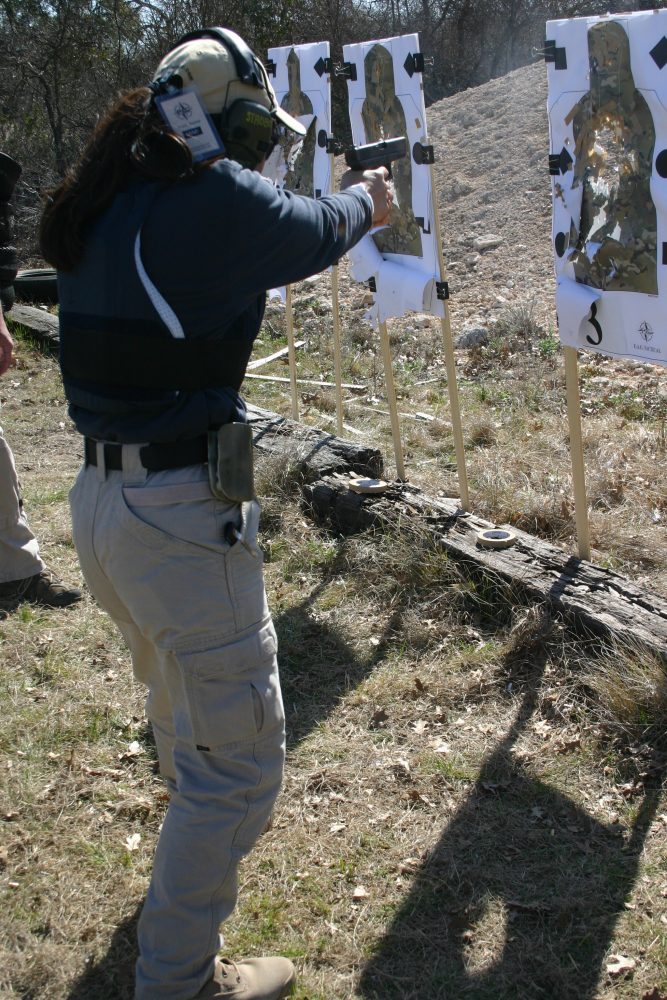
Pat stressed “roadhouse rules” when dealing with multiple attackers: shoot each one once before engaging any with multiple shots. We ran several courses of fire to reinforce this concept and then did others that stressed different sequences of engagement.
The box drill consisted of a hammer fired to our target, then a hammer to the one alongside it, followed immediately by a brain shot to that target and a brain shot to the original target.
Pat’s assistant, Mike Hueser, stepped in and covered malfunction clearance. Then it was time to address shooting on the move.
When shooting on the move, Pat stressed not moving any faster than you could get hits and, very importantly, keeping your knees bent and lowering your center of gravity to provide a more stable and balanced shooting platform.
Pat pointed out that many gunfights take place within seven feet, and at close range you need more speed than precision. To that end, we went over an extreme close quarters response for when someone has their hands on you. This involved a palm strike to the attacker’s face or fingers to his eyes with your non-shooting hand, followed by stepping back—and off-line if possible—then drawing and engaging.
After dinner, we returned to the range for the night shooting portion of the class. Pat went over various shooting techniques and discussed different lights and batteries, with an emphasis on using quality batteries, as certain cheap imported batteries have actually started fires in lights. Pat recommends carrying an extra light, as well as extra batteries and bulbs. If neither the light nor the pistol is in your hand, the pistol gets priority for being drawn in situations where you need to identify and engage a threat.
The second day began with a refresher on shooting from standing and kneeling, shooting on the move, and engaging multiple targets with reloads. Next we covered turning and engaging. After a few more shooting exercises, the rest of the second day was spent practicing and qualifying the MEU(SOC) course of fire.
Ours was not a true qualification, since the true MEU(SOC) qual is run in full gear and utilizes turning targets that only remain facing for the time limit of each segment.
Still, the course of fire combined many of the elements that we had covered in class, including strong-hand only, support-hand only, multiple rounds per target, multiple target engagement, speed reloads, and shooting on the move.
Shooting on the move during MEUSOC drill.
This class contained many valuable takeaways. One of them was Pat explaining why he grips his holstered pistol several times a day: to help develop and maintain a tactile index. This can include disengaging any retention devices. Keep in mind that touching a weapon under concealment is a telltale giveaway, so use common sense when practicing this and restrict it to times when there is no chance of anyone who might become alarmed or suspicious seeing it.
Pat flatly pointed out that he has not invented anything new, and what he teaches is a compilation of his decades of training, experience, and best practices. Fights are sometimes won not because the winner was better, but because he made fewer mistakes than the loser. As Pat reminded us, “A lot of what we learn is on the tombstones of others.”
SOURCES:
EAG Tactical
Dept. S.W.A.T.
P.O. Box 3000
Chino Valley, AZ 86323
[email protected]
Apex Tactical Specialties, Inc.
Dept. S.W.A.T.
715-D Santa Maria Ave.
Los Osos, CA 93402
(805) 528-5250
www.apextactical.com
Black Hills Ammunition
Dept. S.W.A.T.
P.O. Box 3090
Rapid City, SD 57709-3090
(605) 348-5150
www.black-hills.com
Bowie Tactical Concepts
Dept. S.W.A.T.
124 Roy Pence Road
West Union, OH 45693
(937) 544-4606
www.bowietacticalconcepts.com
Smith & Wesson
Dept. S.W.A.T.
2100 Roosevelt Ave
Springfield, MA 01104-1698
(800) 331-0852
www.smith-wesson.com
